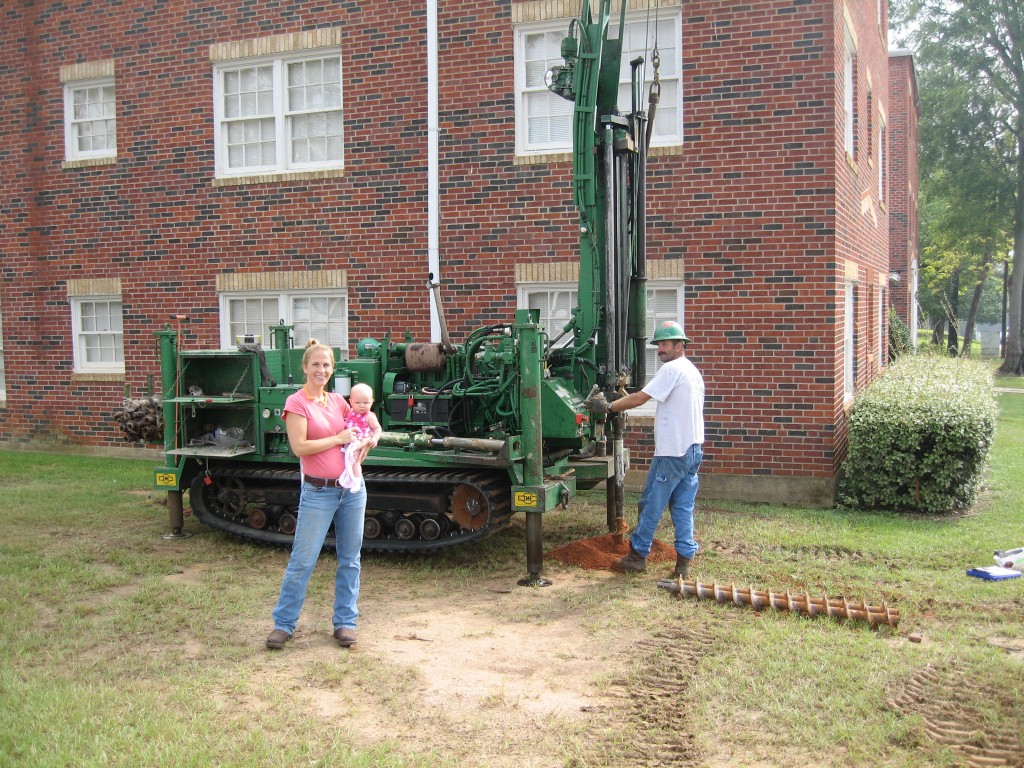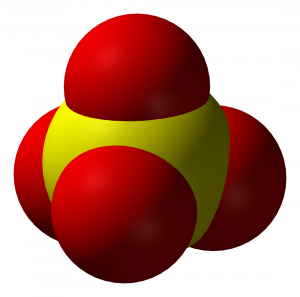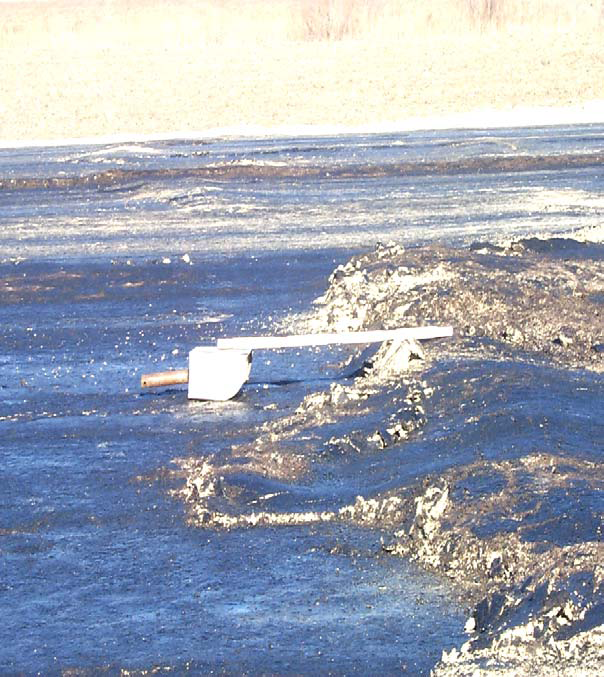Last week was the first post in a series about sulfates in soils. This week I will talk about soil stabilization chemicals and their relationship to sulfate soils.
SOIL STABILIZATION CHEMICALS
Chemical modification of soil involves mixing soil with a chemical additive such as lime, Portland cement, flyash, cement kiln dust, or a combination of any of the four. Soils treated with chemicals may expand to an even greater extent if chemical modification is used in soils which contain high levels of sulfates, organic matter, or salts.
Lime
Lime is the most common chemical additive for treating highly plastic clay soils. When treating soils, lime can be used in two different forms: quicklime or hydrated lime.
Quicklime, or calcium oxide, is the most reactive form of lime. In the presence of moisture, it is corrosive to equipment and to human skin. When mixed with water it produces heat and swells. Lime mixed with water is hydrated lime, also known as slaked lime. Slaked lime comes as a fine powder or mixed in a slurry, where quicklime is coarse powder (Hausmann, 1990). Quicklime is more cost-effective because it takes less to react with the soil, but slaked lime is often used instead. More and more communities in Oklahoma have regulations against using quicklime because of its corrosive nature and ability to travel in windy conditions.
Quicklime reacts with moisture in the clay soils and generates heat and expands, consolidating the soil. This is especially effective when the lime is injected or placed in layers, as opposed to simple soil mixing (Hausmann, 1990).
Slaked lime, used in a slurry, can be more costly to transport, but is safer for the contractors, equipment, and persons down-wind of the project.
In either the quicklime or slaked form, when lime is mixed with clay, two pozzolanic chemical reactions occur. These reactions are cation exchange and flocculation-agglomeration. In the cation exchange reaction, calcium ions are exchanged with the adsorbed cations attached to the montmorillonite surfaces. The flocculation-agglomeration reaction causes the clay particles to flocculate and agglomerate into large clumps. This decreases the liquid limit and increases the plastic limit, which decreases the plasticity index (Das, 2004). The strength, shrinkage limit and workability of the soil are also increased. In addition to decreasing the plasticity index, increasing the shrinkage limit, increasing the workability and improving the strength of high plasticity index soils, lime treatment also increases a soil’s permeability and optimum water content and decreases its dry density (Hausmann, 1990).
Cation exchange and flocculation-agglomeration are immediate reactions when soil is mixed with lime. A secondary reaction causes cementation of the soil by removing the silica and alumina from the clay’s crystal lattice structure. This increases the strength of the clay soil, both immediately and long-term (Hausmann, 1990).
Lime stabilization is the most common form of chemical stabilization for high plasticity index soils. Lime can be used when sulfates are present in low levels and at higher levels if the conditions are tested and monitored correctly.
Portland Cement
Portland cement is the most commonly used additive for general soil stabilization. Cement stabilization is effective for a wide variety of soil types, including expansive clays, but is usually used to increase strength in soils. Cement has the same effects on sulfate rich soils as lime does.
With cement stabilization of soils, cementation occurs between the soil and the calcium silicate and aluminate hydration products (Gromko, 1974). Cement treatment of soils generally increases the maximum dry density and reduces the plasticity index of an expansive soil. A small addition of cement to an expansive subgrade material can often reduce the shrink/swell potential below 1 percent (Hausmann, 1990).
Cement stabilization is a viable option for treating expansive soils. As with lime, it can be used when sulfates are present in low levels and at higher levels if the conditions are tested and monitored correctly.
Fly Ash
Fly ash is a waste product created by coal combustion. It is a fine-grained dust primarily composed of silica, alumina, and various oxides and alkalies (Das, 2004). Fly ash is usually combined with lime to stabilize soils. Therefore, it poses the same risk to sulfate rich soils as does lime and cement.
Class F fly ash is produced when anthracite or bituminous coal is burned. It has pozzolanic properties and can react with hydrated lime to produce cementitious products (Hausmann, 1990). Class C fly ash is produced when subbituminous or lignite coal is burned. It contains up to 25 percent free lime, which means it can produce cementitious reactions without the addition of manufactured lime (Das, 2004). Additive mixtures of fly ash and lime contain 10 to 35percent fly ash and 2 to 10 percent lime (Hausmann, 1990).
As with lime and cement, flyash can be used when sulfates are present in low levels and at higher levels if the conditions are tested and monitored correctly.
Cement Kiln Dust
Cement kiln dust (CKD) is a byproduct of Portland cement rotary kiln operations. It is a fine powder that is chemically similar to Portland cement. It is used in the same fashion as Portland cement.
Because CKD has many of the same properties as Portland cement it too has negative effects on sulfate rich soil. But as the other products, it can be used when sulfates are present in low levels and at higher levels if the conditions are tested and monitored correctly.



